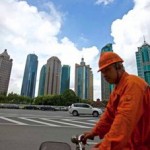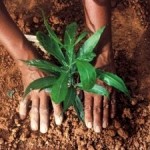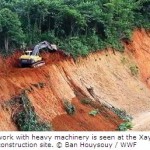Risk Profiles: Key Findings by Country
Brazil
- Brazil’s ecological footprint has tripled between 1961 and 2008, but the country’s ecosystems still generate more natural resources and services than its own population demands.
- Exposure to natural resource price volatility will continue to increase in coming years.
- Climate change may affect rainfall patterns and increase drought, reducing agricultural production in poorer regions.
- Sovereign debt levels are moderate, so Brazil is in a position to absorb negative shocks, although rising commodity prices pose a risk.
France
- France demands 1.4 times more from its ecological assets than they can sustainably provide. This gap has been growing at annual rate of over 1 per cent in past ten years.
- France is less vulnerable to changing commodity prices than the other countries studied, but is exposed to fossil fuel-related risks due to potential supply disruptions from imports.
- France has lower resilience to natural resource risks because of high levels of sovereign debt and budget deficits.
 India
India
- India demands over 1.8 times more from its ecological assets than they can sustainably provide. This gap has been growing at annual rate of over 4.6 per cent in the past ten years.
- Deforestation, overgrazing, climate change and soil degradation are key risks.
- Access to energy is vital to the economy due to energy intensive industries such as steel-making and cement production.
- Due to population increases, an ever larger share of India’s natural resource needs will have to be met from abroad.
- India has lower resilience to adverse resource price shocks due to its high budget deficit and high inflation rate.
Japan
- Overuse of domestic ecological assets has tripled between 1961 and 2008.
- Japan met only 35 per cent of renewable natural resource needs domestically in 2008, compared to 73 percent in 1961.
- Increasing reliance on imports for fisheries, fuel, food, and agricultural products, exposes Japan to supply disruption risks.
- Economy is dominated by high-value added products, representing a lower vulnerability to changing commodity prices.
- High sovereign debt and government deficit give Japan little fiscal space to respond to natural resource price shocks.
Turkey
- Turkey demands 1.5 times more from its ecological assets than they can sustainably provide. This gap has been growing at annual rate of 6 per cent in past ten years.
- Resource-intensive industries, e.g., textiles and food processing, constitute a large part of the economy.
- Water scarcity, desertification and land degradation pose major risks.
- Water crop demand is set to rise by 20 per cent by 2050, yet severe water shortages are expected due to climate change.
- Resilience to resource shocks is helped by moderate government debt levels.
The E-RISC report is based on data from Global Footprint Network’s National Footprint Accounts and UNCTAD data on non-renewable resources. The report presents a weighted numerical ‘score’ representing the natural resource risks faced by the five pilot countries.
Although the framework presented in the report is only an initial step, it represents an important first look into developing standardized methods to clarify the linkages between natural resource changes, and financial and economic risks, at the country level.
The authors encourage credit ratings agencies, asset managers, asset owners and others to develop the pilot methodology into a usable and standardized tool for broad investment analysis, which more fully captures countries’ potential exposure to natural resource risks.
The development of such indicators must go hand-in-hand with concrete actions by governments to promote more sustainable methods of production and consumption, thereby reducing pressures on natural resources, and their related financial risks.
The report identifies a number of efforts by national governments to better understand how rising resource constraints are impacting economic security and citizens’ well-being.
These include:
- The Philippines has launched the first national Ecological Footprint network in Southeast Asia.
- Costa Rica has featured the Ecological Footprint in its 2011 State of the Nation report; an overview of national social, economic and environmental issues.
- Ecuador has committed to keeping the country’s Ecological Footprint below the available capacity of its natural resources as part of its National Development Plan.
Source: UNEP.












